Discover 20 hidden attractions, cool sights, and unusual things to do in Natchez (United States). Don't miss out on these must-see attractions: Jefferson College, Melrose, and Longwood. Also, be sure to include Rosalie Mansion in your itinerary.
Below, you can find the list of the most amazing places you should visit in Natchez (Mississippi).
Table of Contents
Jefferson College
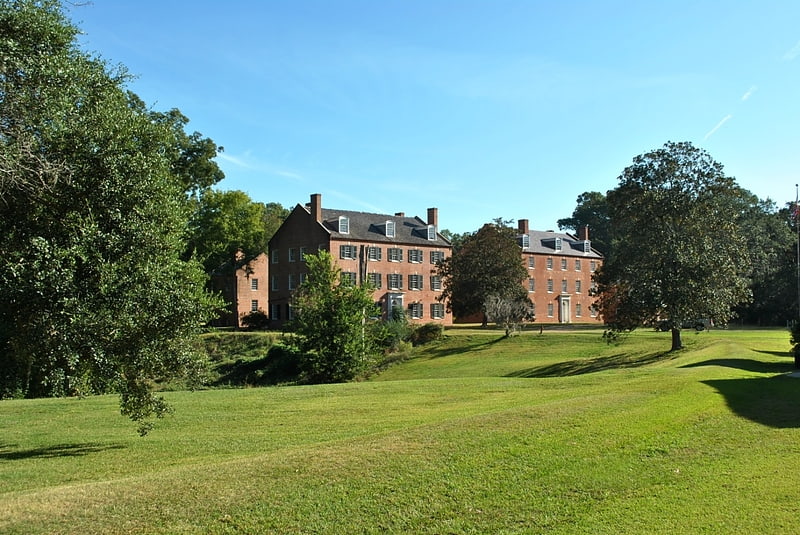
College in Washington, Mississippi. Jefferson College, in Washington, Mississippi, was founded as an all-male college but operated primarily as a college preparatory school and later military boarding school during most of its history. Named in honor of Thomas Jefferson, the college was chartered in 1802, but did not begin operation until 1811.
Due to declining enrollment and financial difficulties, the facility closed in 1964. The historic campus was listed on the National Register of Historic Places in 1970, and was designated a Mississippi Landmark in 1985. The site is operated as an historic museum and park.[1]
Melrose

Mansion in Natchez, Mississippi. Melrose is a 15,000 square feet mansion, located in Natchez, Mississippi, that is said to reflect "perfection" in its Greek Revival design. The 80-acre estate is now part of Natchez National Historical Park and is open to the public by guided tours. The house is furnished for the period just before the Civil War. Melrose was declared a National Historic Landmark in 1974.[2]
Address: 1 Melrose Montebello Pkwy, 39120 Natchez
Longwood
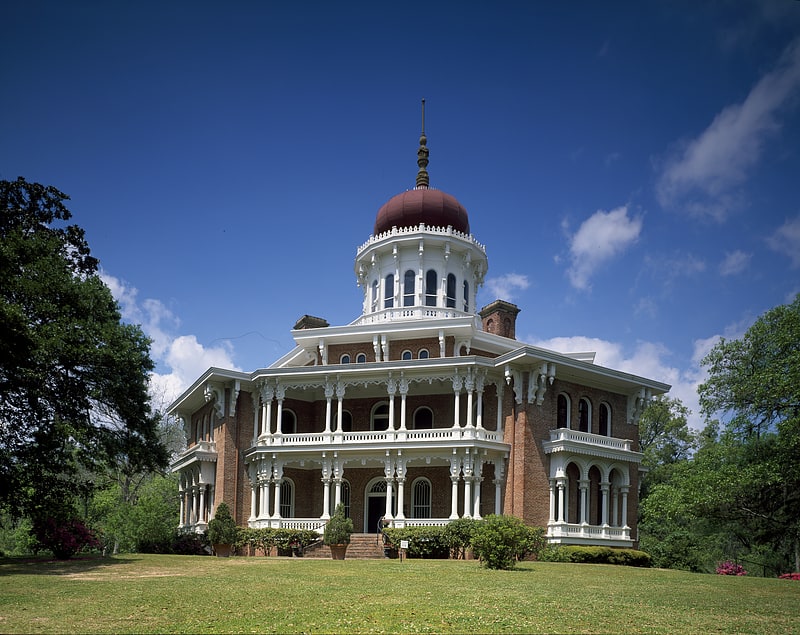
Mansion in Natchez, Mississippi. Longwood, also known as Nutt's Folly, is a historic antebellum octagonal mansion located at 140 Lower Woodville Road in Natchez, Mississippi, United States. Built in part by enslaved people, the mansion is on the U.S. National Register of Historic Places, and is a National Historic Landmark. Longwood is the largest octagonal house in the United States.[3]
Address: 140 Lower Woodville Rd, 39120-4412 Natchez
Rosalie Mansion

Museum in Natchez, Mississippi. Rosalie Mansion is a historic pre-Civil War mansion and historic house museum in Natchez, Mississippi. Built in 1823, it served as the architectural inspiration for a large number of Natchez's grand Greek Revival mansions, and was a major influence on Antebellum architecture in the greater region. During the American Civil War, it served as Union headquarters for the Natchez area from July 1863 on. It was designated a National Historic Landmark in 1989.[4]
Address: Corner of Canal and Orleans Street, 39120 Natchez
Magnolia Hall
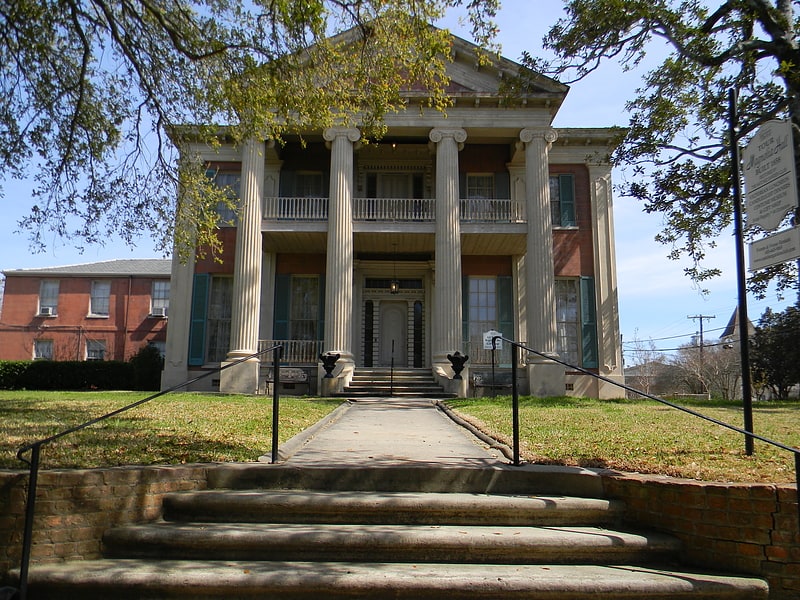
Museum in Natchez, Mississippi. Magnolia Hall of Natchez, Mississippi, is also known as the Henderson-Britton House and was built in 1858. As a Greek Revival mansion it is a contributing property to the Natchez On Top of the Hill Historic District, listed on the National Register of Historic Places.
Magnolia Hall was built by Thomas Henderson, a wealthy merchant, planter and cotton broker. The home is one of the finest examples in Natchez of the Greek Revival style.
During a bombardment of Natchez by the Union gunboat Essex, a shell hit the soup tureen in Magnolia Hall's kitchen.
The Natchez Garden Club has restored Magnolia Hall. Rooms on the main floor are filled with mid-nineteenth century antiques, while rooms on the upper floors contain a costume collection.
Magnolia Hall is open for tours, and there is a gift shop.[5]
Address: 215 S Pearl St, 39120-3420 Natchez
Emerald Mound
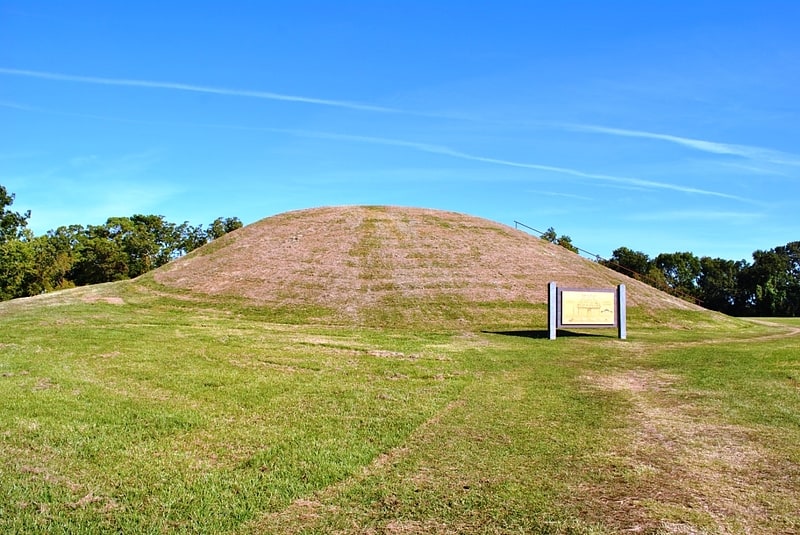
Historical landmark in Adams County, Mississippi. The Emerald Mound Site, also known as the Selsertown site, is a Plaquemine culture Mississippian period archaeological site located on the Natchez Trace Parkway near Stanton, Mississippi, United States. The site dates from the period between 1200 and 1730 CE. It is the type site for the Emerald Phase of the Natchez Bluffs Plaquemine culture chronology and was still in use by the later historic Natchez people for their main ceremonial center. The platform mound is the second-largest Mississippian period earthwork in the country, after Monk's Mound at Cahokia, Illinois.
The mound covers eight acres, measuring 770 feet (230 m) by 435 feet (133 m) at the base and is 35 feet (11 m) in height. Emerald Mound has a flat top with two smaller secondary mounds at each end. It was constructed around a natural hill. Travelers in the early 19th century noted a number of adjoining mounds and an encircling ditch that are no longer present. This site once had six other secondary mounds which were lost due to the plowing of the surface of the mound. Emerald Mound was stabilized by the National Park Service in 1955. It was declared a National Historic Landmark in 1989. The mound is now managed by the Park Service's Natchez Trace Parkway unit, and is open to the public.[6]
Stanton Hall
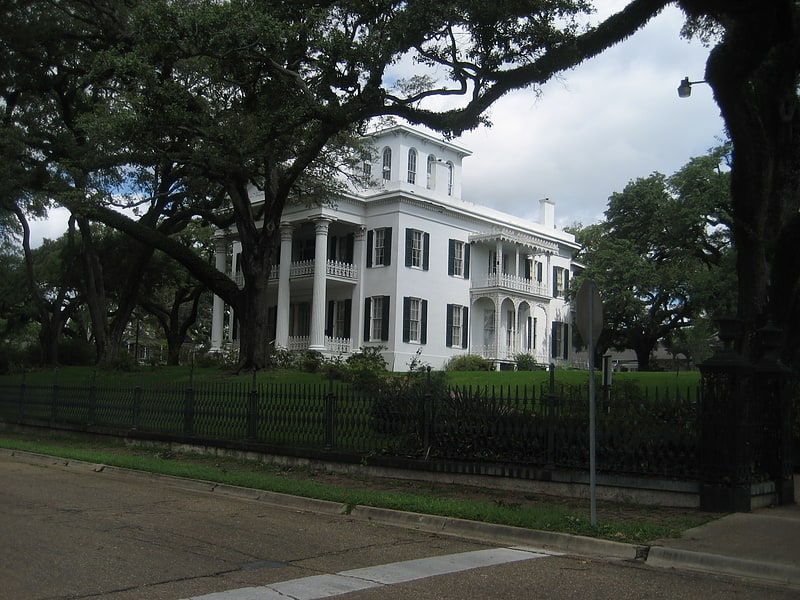
Mansion in Natchez, Mississippi. Stanton Hall, also known as Belfast, is an Antebellum Classical Revival mansion at 401 High Street in Natchez, Mississippi. Built in the 1850s, it is one of the most opulent antebellum mansions to survive in the southeastern United States. It is now operated as a historic house museum by the Pilgrimage Garden Club. The house was declared a National Historic Landmark in 1974 and a Mississippi Landmark in 1995.[7]
Address: 401 High St, 39120-3226 Natchez
Monmouth
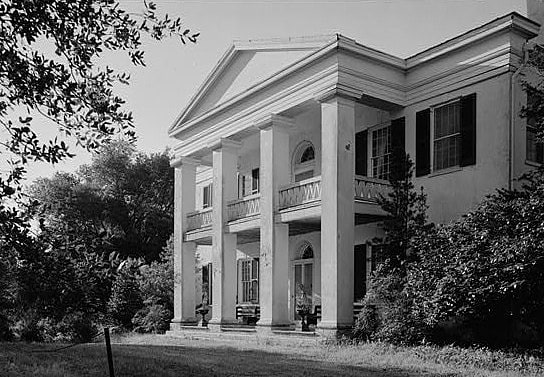
Home in Natchez, Mississippi. Monmouth is a historic antebellum home located at 1358 John A. Quitman Boulevard in Natchez, Mississippi on a 26-acre lot. It was built in 1818 by John Hankinson, and renovated about 1853 by John A. Quitman, a former Governor of Mississippi and well-known figure in the Mexican–American War. It is one of Natchez's grandest Greek Revival mansions. It was declared a Mississippi Landmark in 1986 and a National Historic Landmark in 1988. It is now a small luxury hotel.[8]
Address: 1358 John A Quitman Blvd, 39120-3603 Natchez
Natchez Bluffs and Under-the-Hill Historic District
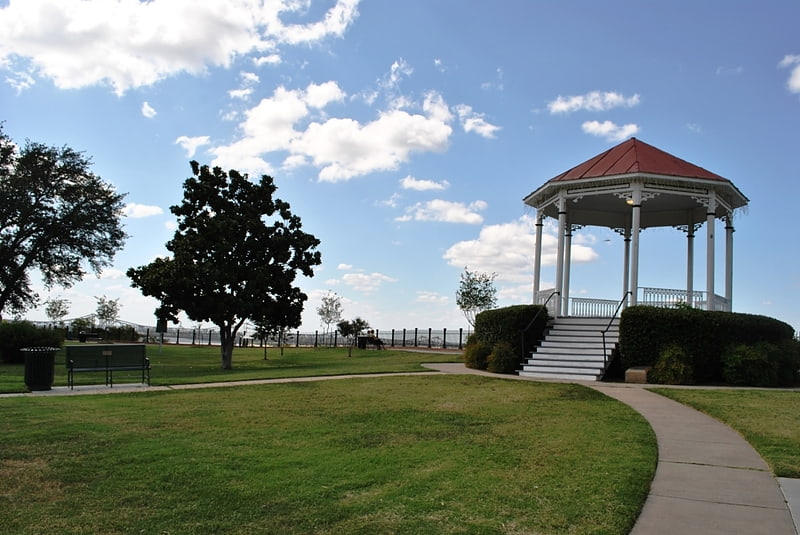
The Natchez Bluffs and Under-the-Hill Historic District is a 75-acre historic district that was listed on the U.S. National Register of Historic Places in 1972. It is roughly bounded by S. Canal St. Broadway, and the Mississippi River.
The "Under-the-Hill" area once contained all of Natchez, i.e. about 20 buildings at the time of the American Revolutionary War. Gradually houses were built on the bluffs above, an "Upper Town" emerged, and eventually the center of Natchez shifted.
The district's primary historic assets are the Natchez landing site ("Under the Hill") and, on the bluff above, a city park area which includes the site of the second French Fort Rosalie, built during 1730–34. The landing site area was where the Natchez Trace began. The area was frequented by gamblers, river pirates, highwaymen, and prostitutes and was described, in 1810, as a place such that "'...for the size of it, there is not, perhaps in the world, a more dissipated spot.'" The fort was renamed Fort Panmure by the British after they took possession following the 1756-1763 Seven Years' War, then later fell into ruin. In 1971, the district area included six "dilapidated" brick buildings on Silver Street of uncertain age.
The Fort Rosalie portion of the district is included in the Natchez National Historical Park.
A map delineating the district appears on page 15 in its NRHP nomination document.[9]
St. Mary Basilica
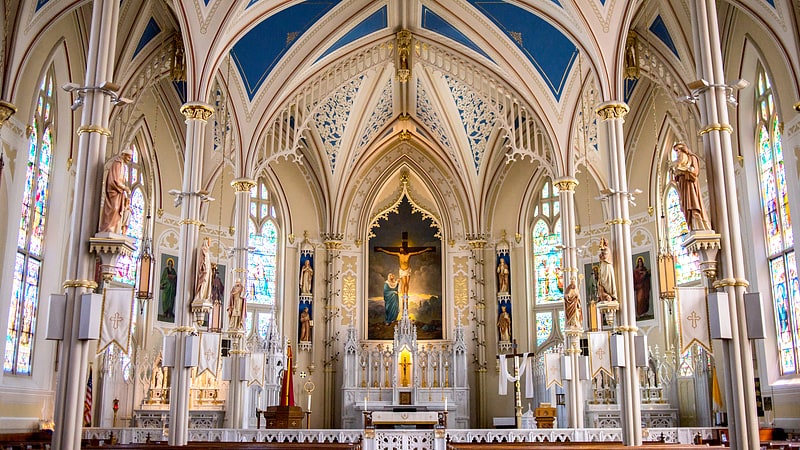
Parish church in Natchez, Mississippi. St. Mary Basilica, formerly St. Mary's Cathedral, located in Natchez, Mississippi, United States, is a parish church in the Diocese of Jackson and Minor basilica of the Catholic Church. In 1979 it was listed under its former name as a contributing property in the Natchez On-Top-of-the-Hill Historic District on the National Register of Historic Places. The Basilica was dedicated to Mary, under the title Our Lady of Sorrows on December 25, 1843.[10]
Address: 105 S Union St, 39121 Natchez
First Presbyterian Church of Natchez
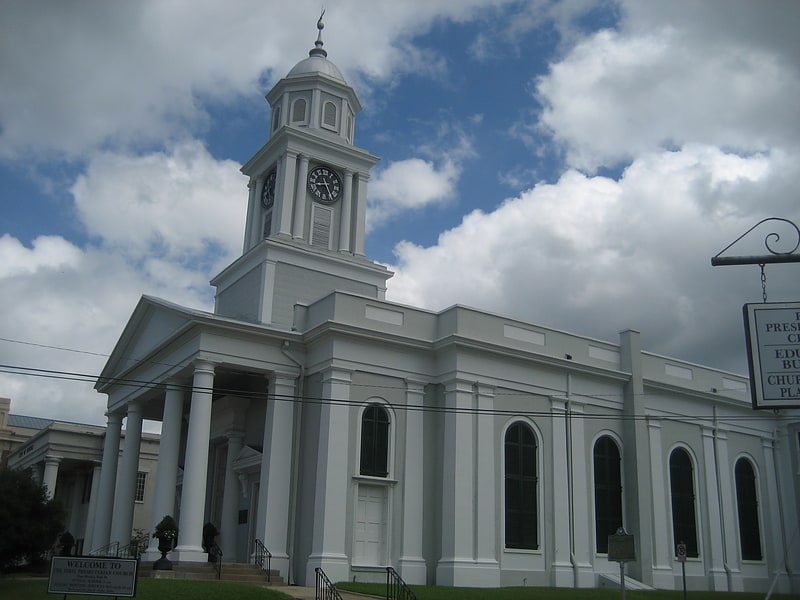
Building in Natchez, Mississippi. First Presbyterian Church of Natchez is a historic church at 117 S. Pearl Street in Natchez, Mississippi. It was built in 1830 with Greek Revival and Federal style architectural features. The building was added to the National Register of Historic Places in 1978. It also became a contributing property to the Natchez On-Top-of-the-Hill Historic District in 1979. For many years The Manse housed its pastors.[11]
Address: 400 State St, 39120-3475 Natchez
Natchez National Historical Park

National park in Natchez, Mississippi. Natchez National Historical Park commemorates the history of Natchez, Mississippi, and is managed by the National Park Service.
The park consists of four separate sites:
Fort Rosalie is the site of a former fortification from the 18th century, built by the French. It was later renamed Fort Panmure and controlled in turn by Great Britain, Spain, and the United States. The fort site is not open to the public.
The William Johnson House was the home of William Johnson, a 19th-century free African American barber and resident of Natchez whose diary has been published.
Melrose was the estate of John T. McMurran, a lawyer, state senator, and planter who lived in Natchez from 1830 until the Civil War.
Forks of the Road marks what was the second-busiest slave trading market in the Deep South between 1832 and 1863. The park opened in an official ceremony on June 18, 2021.
Both Melrose and the William Johnson House contain furnishings related to life in antebellum Natchez and other exhibits. The collection at Melrose's two-story Greek Revival mansion and its slave quarters include painted floor cloths, mahogany, a punkah, a set of Rococo Revival parlor furniture, a set of Gothic Revival dining room chairs, and bookcases with books dating to the 18th century. These were collected from Natchez families, including the McMurran family. The collection in the Johnson house includes furnishings from his life and family. Archaeological objects found in the park are also on display.[12]
Address: 1 Melrose Montebello Pkwy, Natchez
Auburn
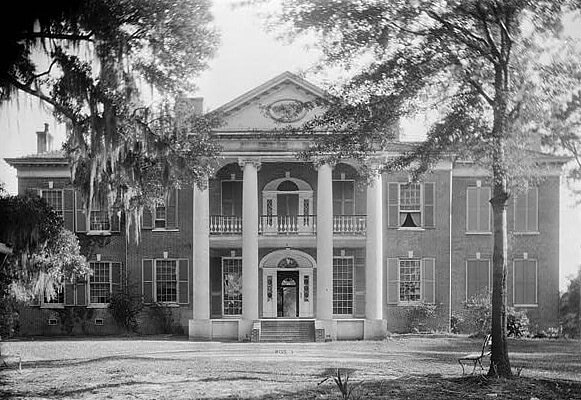
Mansion in Natchez, Mississippi. Auburn is an antebellum mansion in Duncan Park in Natchez, Mississippi. It was designed and constructed by Levi Weeks in 1812, and was the first building to exhibit Greek Revival order in the town. Its prominent two-story Greek portico served as a model for the subsequent architectural development of local mansions. It was declared a National Historic Landmark in 1974 and a Mississippi Landmark in 1984.[13]
Address: 400 Duncan Ave, 39120-3954 Natchez
Natchez–Vidalia Bridge

Bridge in the Concordia Parish, Louisiana. The Natchez–Vidalia Bridge are two twin cantilever bridges carrying U.S. Route 84, and 425 across the Mississippi River between Vidalia, Louisiana and Natchez, Mississippi. It is the tallest bridge in Mississippi.
The original bridge, built by the Works Progress Administration and completed in October 1940, has only two 8-foot lanes and lacks shoulders, and now carries all westbound traffic. The newer, eastbound bridge completed in 1988, has 11-foot lanes with inside and outside shoulders. Eastbound traffic is heavier, as that crossing goes into Natchez and connects with US Highway 61, where travelers can continue north to Vicksburg and south to Baton Rouge.[14]
Holy Family Catholic Church Historic District
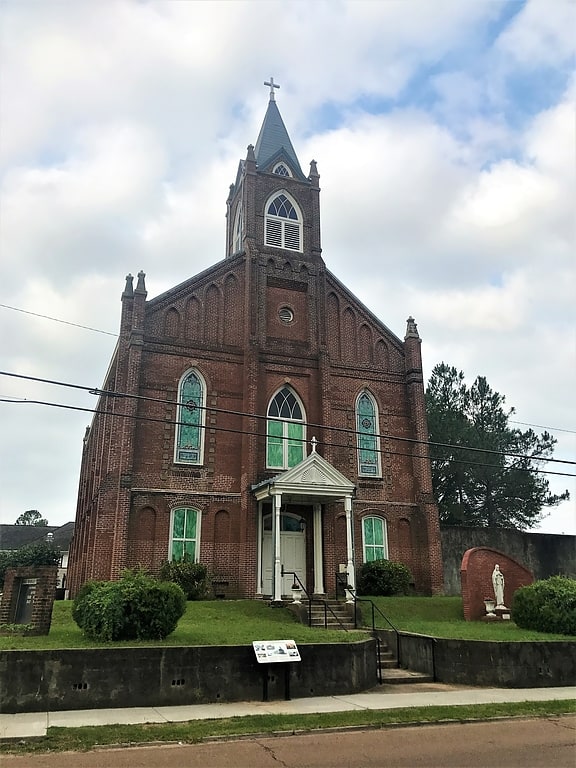
The Holy Family Catholic Church Historic District, in Natchez, Mississippi, is a 9.2-acre historic district that was listed on the U.S. National Register of Historic Places in 1995. The district is small, relative to other historic districts in Natchez such as the Natchez On-Top-of-the-Hill Historic District which is adjacent, on the west. Its most significant building is the Holy Family Church, the first African-American Catholic church in the state; dedicated in 1894, it is Natchez's best piece of Gothic Revival architecture. Most other buildings in the district are cottages in Queen Anne, Eastlake, Colonial Revival, bungalow, and American Craftsman architectural styles. The district as a whole is significant for its architecture and for its African-American historical associations.
The listing included 49 contributing buildings and one other contributing site. It includes Greek Revival, Italianate, and Queen Anne architecture.
The area is a historically black neighborhood, like the Woodlawn Historic District, also NRHP-listed, nearby. The district is a cluster of buildings near to the Holy Family Catholic Church, which is on St. Catherine St. which was originally the old Natchez Trace.[15]
Address: 16 Orange Ave, 39120-3647 Natchez
Natchez City Cemetery

Cemetery. Natchez National Cemetery is a United States National Cemetery located in the city of Natchez overlooking the Mississippi River in Adams County, Mississippi. Administered by the United States Department of Veterans Affairs, it encompasses 25.7 acres, and as of the end of 2005, had 7,154 interments.[16]
Grand Village of the Natchez

Museum in Natchez, Mississippi. Grand Village of the Natchez, also known as the Fatherland Site, is a 128.1-acre site encompassing a prehistoric indigenous village and earthwork mounds in present-day south Natchez, Mississippi. The village complex was constructed starting about 1200 CE by members of the prehistoric Plaquemine culture. They built the three platform mounds in stages. Another phase of significant construction work by these prehistoric people has been dated to the mid-15th century. It was named for the historic Natchez people, who used the site in the 17th and 18th centuries.
In the early 18th century, when the historic Natchez people occupied the site, they added to the mounds.
The village was the Natchez tribe's main political and religious ceremonial center in the late 17th and early 18th centuries, according to historical and archaeological evidence. It replaced the Emerald Mound Site in this role. After suffering a 1730 military defeat by French settlers, the Natchez abandoned the site and moved away. In the early 19th century, the land was privately owned and cultivated as part of the Fatherland Plantation. Archaeological excavations started in 1930, and three mounds were found. (They had been partially buried by loess soils, with some erosion due to St. Catherine's Creek.)
The site was declared a National Historic Landmark in 1964 and a Mississippi Landmark in 1985. The site is listed on the Mississippi Mound Trail.[17]
Address: 400 Jeff Davis Blvd, 39120-5110 Natchez
Natchez Museum of African American History and Culture

Museum. The Natchez Museum of African American History and Culture is a museum located in Natchez, MS, United States. The museum chronicles the history and culture of African Americans in the southern United States. The museum was first opened in 1991 by the Natchez Association for the Preservation of African American Culture, also known as NAPAC, an organization dedicated to exploring the societal contributions made by people of African origin and descent.[18]
Address: 301 Main St, 39120-3461 Natchez
Dunleith
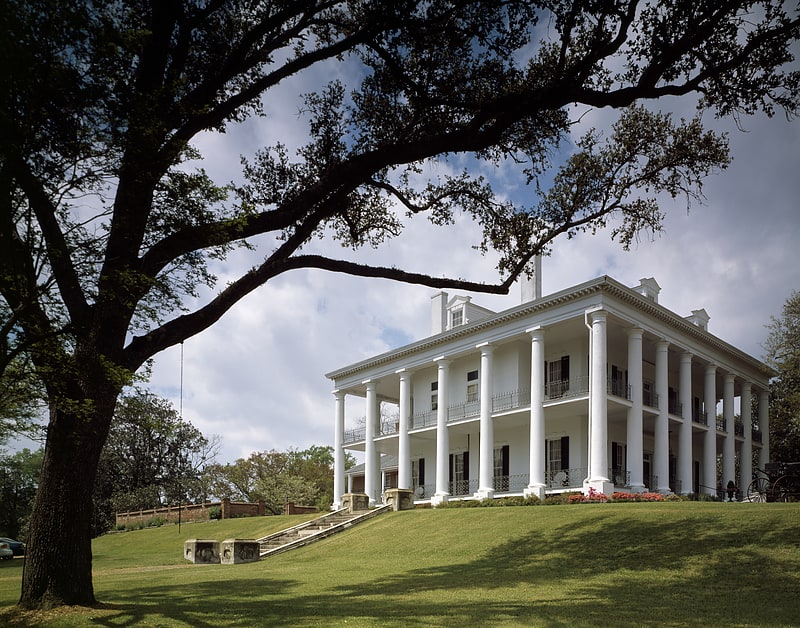
Dunleith is an antebellum mansion at 84 Homochitto Street in Natchez, Mississippi. Built about 1855, it is Mississippi's only surviving example of a plantation house with a fully encircling colonnade of Greek Revival columns, a form once seen much more frequently than today. Now an inn and conference center, it was designated a National Historic Landmark in 1974. Currently the original horse stable serves as a fine dining establishment with a traditional English pub in the lower levels of the structure[19]
Fort Rosalie
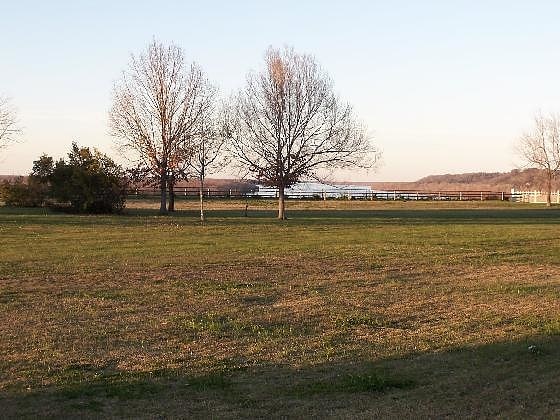
Fort Rosalie was built by the French in 1716 within the territory of the Natchez Native Americans and it was part of the French colonial empire in the present-day city of Natchez, Mississippi.[20]